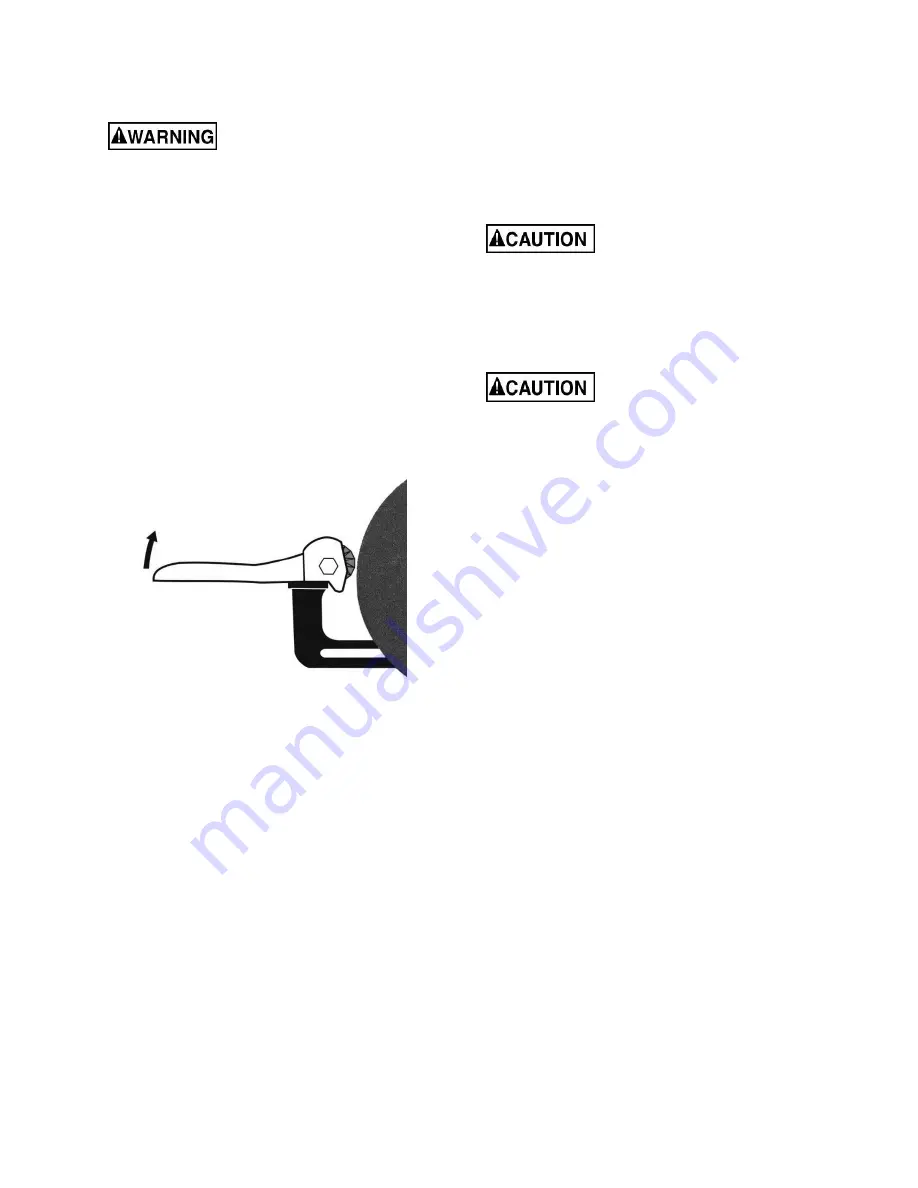
14
9.5
Dressing the wheels
Below is a general procedure for dressing a grinding
wheel.
Use safety glasses or face
shield during dressing operations.
1. Back off the tool rest enough to allow the
dresser to hook over its inside edge (Figure 9-
3). Tighten tool rest in position.
2. Turn on grinder and allow it to reach operating
speed.
3. Set the wheel dresser on the rest and bring it
into contact with the wheel by raising its handle.
Hold the dresser firmly.
Note:
If sparks appear, increase the pressure
of the dresser discs against the wheel.
4. Move the dresser evenly left and right across
the wheel face until the wheel looks clean and
is square to the tool rest.
5. Remove the dresser, and adjust the tool rest to
1/16” away from the newly dressed wheel.
Figure 9-3: wheel dressing
9.6
Wire wheel brushes
Wire brushing provides a fast way to remove rust
scale, burrs, and paint from metal. Use coarse wire
brushes for hard cleaning jobs. Use fine wire
brushes for polishing and finish work. When the
brush tips become dull, reverse the brush on the
grinder.
9.7
Cleaning
Metal shavings may still be hot
from recent grinding operations. Make sure
shavings and debris are cold before cleaning
the grinder.
Brush all shavings from the motor housing, tool
rests, and wheel guards. Check grinding wheels for
cracks and chips. Replace if damaged.
Avoid use of the following
cleaning chemicals or solvents: gasoline,
carbon tetrachloride, chlorinated solvents,
ammonia and household detergents containing
ammonia.
9.8
Lubrication
All motor bearings are permanently lubricated and
sealed at the factory and require no additional
lubrication.
9.9
Additional servicing
Any additional servicing on the grinder should be
performed by an authorized service representative.









































